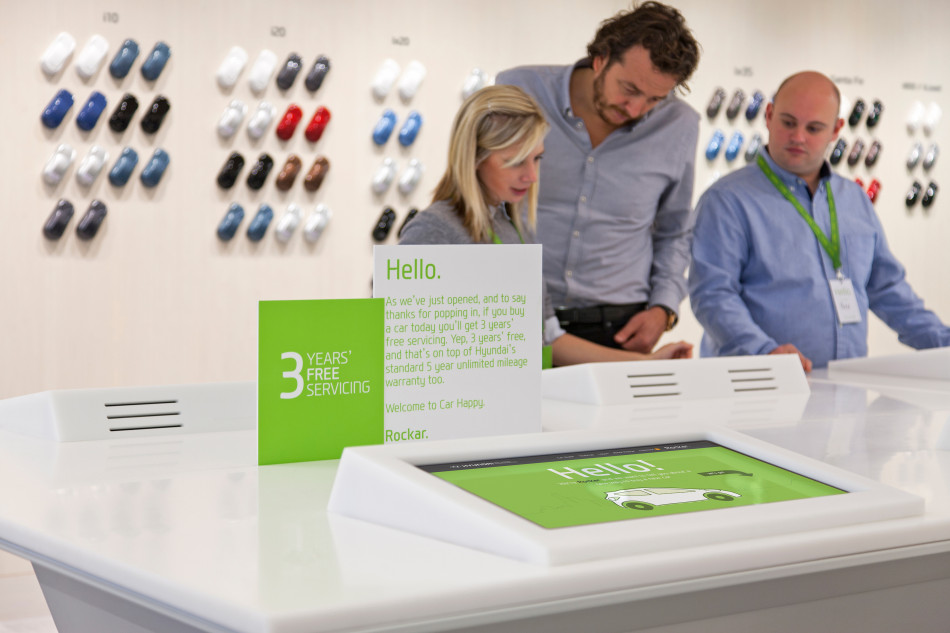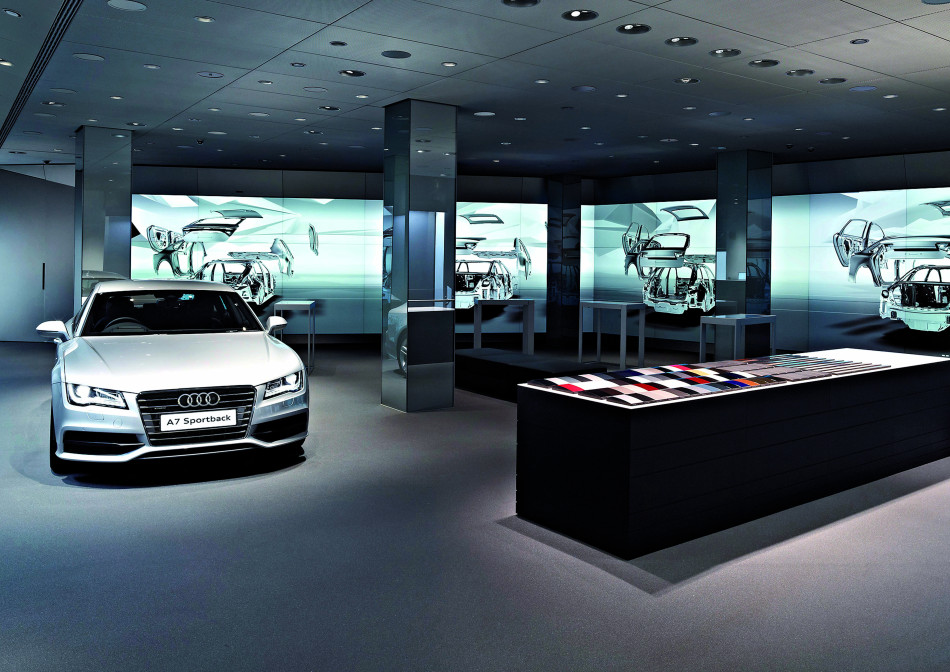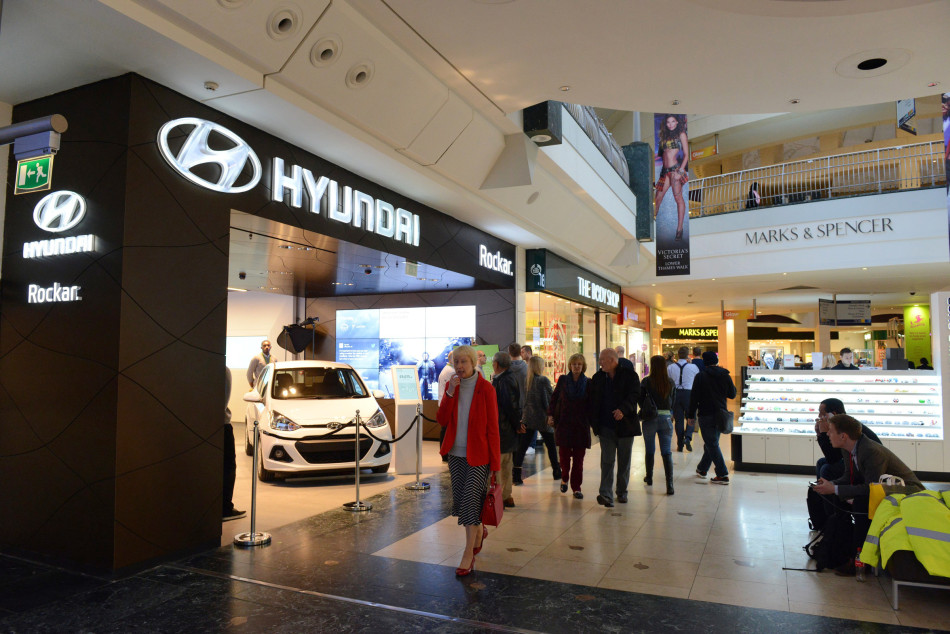From Auto #10: The Shifting Showroom

The traditional car-buying experience has always been a mix of pleasure and pain. The former arrived in the sensory overload of plush upholstery and the new car smell that instantly turned even the most casual browser into a potential buyer.
The pain, unfortunately, routinely stemmed from the often disdainful atmosphere of many traditional dealerships, an environment in which commission-hungry salesmen heaped pressure on customers and bewildered them with an array of confusing extras packages and complex finance options.
That experience may be about to change, however, as potential buyers desert the traditional model for a new world of pop-up, digital-first showrooms and internet-based car purchases.
The leading edge of this potential sea change in purchasing habits is a shift by manufacturers from out-of-town dealerships to the more casually friendly retail environment of shopping malls.
Last November, in the UK, Hyundai entered into a partnership with digital sales operation Rockar to open a showroom in one of Europe’s largest shopping centres, Bluewater in Kent. The store aims to give customers the chance to view Hyundai’s product range in a low-pressure environment, where through the use of screens they can configure the car of their choice, book test drives or even complete a purchase without the need to talk to a salesperson.
Of the initiative, Rockar founder Simon Dixon said: “Our independent research has revealed that almost 40 per cent of Britons are more likely to buy a car if they can avoid talking to salesmen. Almost half say they’d be more likely to buy a car if it was as easy as buying clothes, food and gadgets.”
With the Kent shopping mall generating 27 million visitors per annum and footfall declining at traditional dealerships in recent years the positive aspects of the equation are obvious, especially in light of figures from market researcher Nielsen, which suggest that over the last 10 years in the UK the average number of dealer visits has dropped from seven to 1.5 per purchase.
That reduced number is emblematic of a decline in the appeal of traditional dealerships. According to a recent report by Wall Street trading analyst Bernstein Research, the number of European car retailers has dropped by 12 per cent from a peak in 2007, with the number of main dealers in Western Europe falling from nearly 54,000 in 2007 to 48,000 in 2013.
The shift away from dealerships is not solely predicated on fluctuating sales, however. The whole way in which people view car purchase is changing.
In a recent report on auto trends for 2015, research company Strategy&, part of the vast PwC group, offered the following: “Consumers want a seamless car-buying experience. Most vehicle purchasers browse online to gather information, and although they may still want a test drive, many have said they would like an online ‘buy now’ button and a no-pressure purchasing experience.”
US electric car brand Tesla has resolutely avoided the dealership model and instead opted to focus on shopping centre showrooms and online sales.
“We want to engage with people when they are not thinking about buying a car,” said George Blankenship, Tesla’s VP of Sales and Ownership Experience, in an interview with US website AutoTrader.com. “At a mall, people are already relaxed and out shopping on their own. Most of them will likely never have heard of Tesla, and so we are becoming part of their daily routines.”
In most cases the shopping centre outlet exists as an extension of firms’ online retail presence, with the hi-def screens and interactive experience being linked to an eventual online purchase.
Audi was one of the first manufacturers to pioneer digital showrooms. In 2012 the firm opened its first digital-only showroom, Audi City, at its flagship UK store in central London. Twenty more have been opened worldwide since then.
“Audi City combines the best of two worlds – digital product presentation and personal contact with the dealer,” said the company’s marketing chief Peter Schwarzenbauer. “With Audi City, we are creating a one-stop-shop for experiencing our brand. It is right in the midst of our customers’ lives, yet seamlessly connected to the online range offered by Audi.”
As with so many other areas of retail, it may ultimately be the online shopping experience that becomes the norm as the trend for customers to do their research online grows and car ownership increasingly parallels white goods purchase.
Frost & Sullivan predicts that online car sales will increase eightfold between 2011 and 2025 to reach a value of $4.5 billion, accounting for just under one in every five new car purchases. The firm adds that in high-value markets such as the US and UK, online sales could make up a quarter of the market in 10 years’ time.
The message has not been lost on manufacturers, with Nissan, Jaguar Land Rover, Mini and Mercedes rushing to develop digital showrooms linked to online sales platforms. And if proof were needed of the success of such a model, Audi reported 60 per cent more sales in the first 10 months of operation of its London digital store and a higher price achieved than at its best-selling dealership.
However, the rush to embrace alternative sales points doesn’t quite amount to a death sentence for traditional dealerships.
“If we were to consider [mall showrooms], we would keep our dealers as part of the solution,” says Lexus’ US Group Vice-President Jeff Bracken of his company’s interest in the mall model. “But it’s intriguing if young folk are telling us they don’t look forward to going to a dealership, but they still have an interest in buying a vehicle. [If] that’s an outlet that could work for them, we need to look at that.”
Regardless of how manufacturers wish to position themselves in the transition, it seems clear that a gradual shift is taking place. The days of a family of 2+2 adults and children spending a Saturday afternoon touring an industrial estate complex of cathedral-sized showrooms may, after more than 60 years, be coming to an end, to be replaced by an era of comparison sites, customisation and click-to-buy motoring.
This is a shortened version of a feature from the latest FIA AUTO magazine, which is distributed to senior figures in the motoring and motor sport industries.




 Facebook
Facebook Twitter
Twitter






